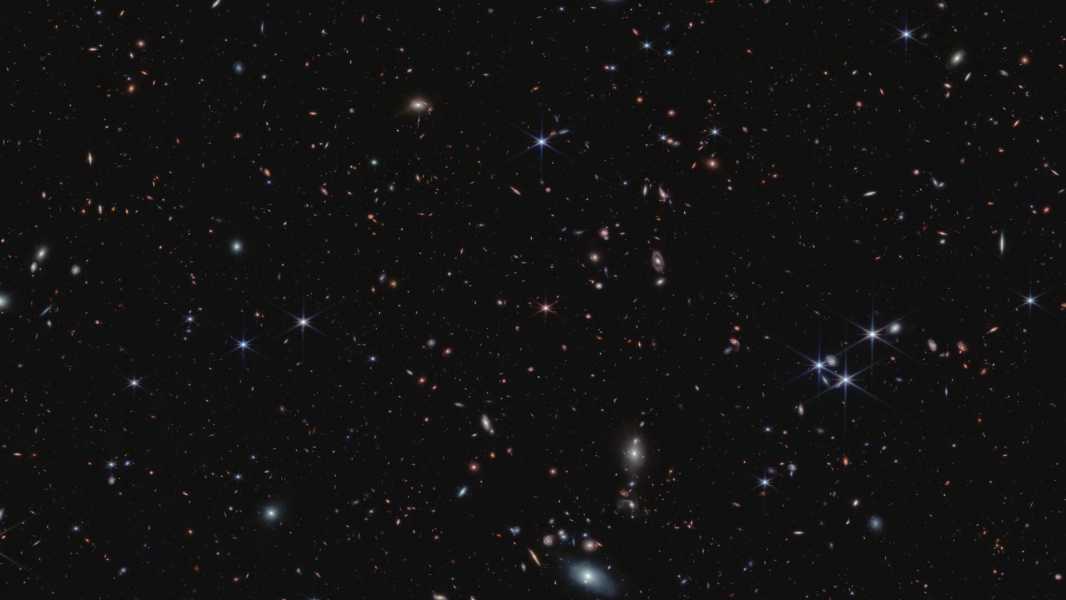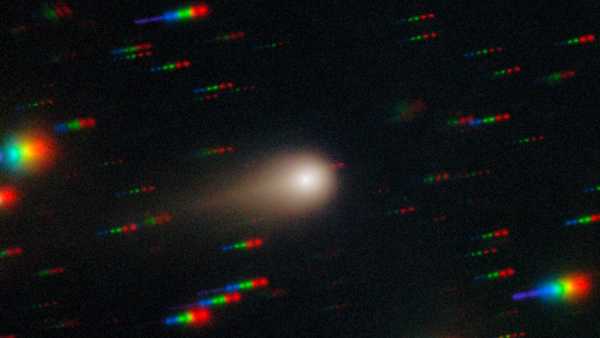
The James Webb Space Telescope has identified a black hole-powered quasar (pink dot in center of image) that has been around since the first billion years after the Big Bang. (Image credit: NASA, ESA, CSA, S. Lilly (ETH Zurich), D. Kashino (Nagoya University), J. Matthee (ETH Zurich), C. Eilers (MIT), R. Simcoe (MIT), R. Bordoloi (MIT), R. Mackenzie (ETH Zurich), A. Pagan (STScI))
Astronomers using the James Webb Space Telescope (JWST) have discovered a hidden group of supermassive black holes in the early universe that had not been previously seen.
This exciting discovery could help fill the gap between traditional quasars and lesser-known “little red dots” that have recently been identified at the dawn of time and may represent young quasars.
Traditional quasars are active galactic nuclei (AGNs), dominated by actively consuming black holes surrounded by complex dust clouds. These AGNs are powered by huge supermassive black holes and are extremely bright, making them easy to spot despite the surrounding dust.
You may like
Sourse: www.livescience.com





